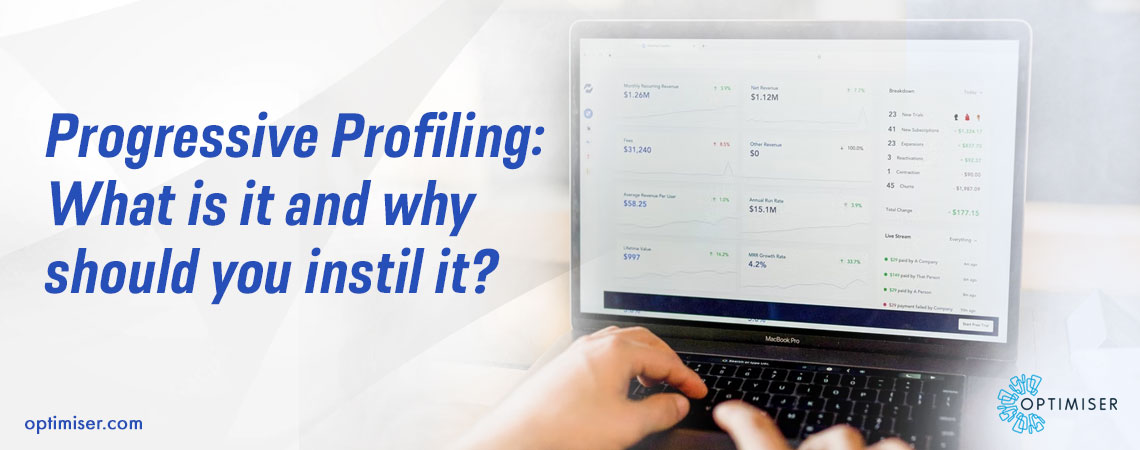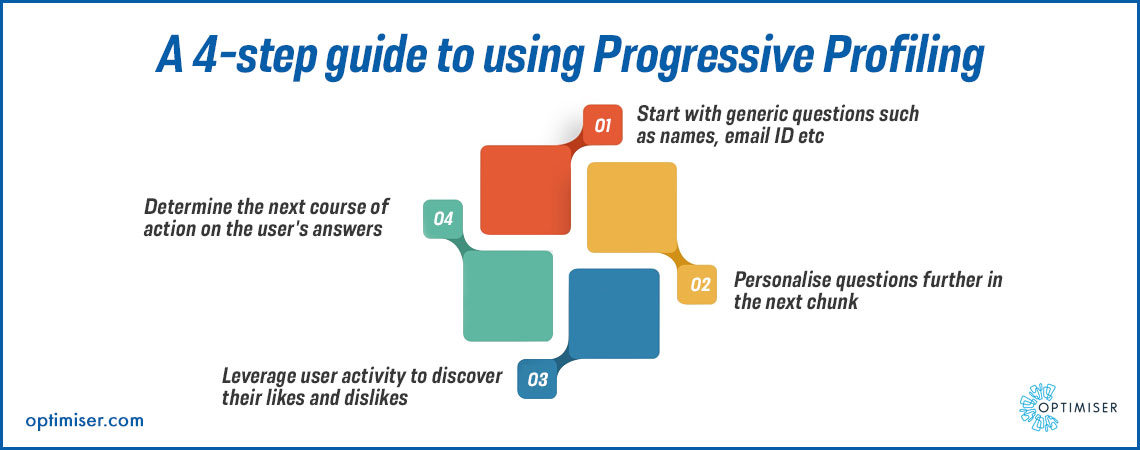
Progressive Profiling: What is it and why should you instil it?
Progressive profiling is a technique used to gather data from leads gradually using dynamic web forms. Rather than collecting all the information at once at the risk of the potential customer abandoning the form, progressive profiling allows you to be interactive and personalised. A cloud CRM software can assist you in collecting this information in chunks and keeping track of it.
By dividing the form into multiple chunks when the user first visits the website, you can ask for their name and email address. The next time, you can ask about their preferences, and so on. Try to get information such as location, employment position, phone number, etc.
While this method can be used as many times as possible, it has been found that after 3 to 4 sets of questions, you will have the data that you need to qualify this visitor as a lead. Allow your marketing team to customise the questions according to the taste of the users. When the visitor becomes a lead, the sales team will be far more effective with the collected information and will provide a unique approach for the product that the visitor seeks.
A 4-step guide to using Progressive Profiling
To understand how to use progressive profiling efficiently, let's break down the process into 4 steps.
Step 1: It's about selecting the right questions
Beginning with the most generic questions is the key. Do not ask too many questions, even if they are generic. It ruins the experience still. Use a maximum of 4 fields to garner the interest of folks and initiate an interaction with your business. If they provide you with an email ID, you can use their visitor's history to send relevant content on emails.
Step 2: Personalise the questions
Once the visitor has crossed the threshold, you can ask the next question depending on the first set of questions, and their visitor history. You can enquire about their work if they use an organisation's email domain. Open-ended or confusing questions should be avoided. The questions should be simple and to the point.

Step 3: Timing is necessary
For sending the next set of questions, timing is key. How will you deliver the next questions such that they are not vexed?
The customer behaviour collected and compiled by Optimiser CRM reports and dashboards can assist you in this process. Useful user data can point you towards their activity and how they have reacted to the email campaigns.
Step 4: Future actions determination
With the gradual collection of data by this step, you can determine whether or not should you qualify a visitor as a lead or not.
Progressive profiling: The advantages
- The most significant advantage of progressive profiling is that it can collect information from visitors easily and without irritating them. When the questions are presented in different sets, visitors are more likely to fill in the data accurately. They do not mind forms that take less than a minute to fill. However, if the forms are longer, the visitors would rather exit the website or fill incorrect data to skip the forms.
- Not only that, progressive profiling makes data collection more efficient and streamlined. When there are fewer fields to fill, you can convince visitors to volunteer their personal information. It has been observed that reducing the number of fields from 11 to 4 has increased the conversion rate by a staggering 120%. Another study discovered that when there are 3 conversion fields, the rate stands at 25%. But when there are 6+ fields, the rate drop to 15%.

Therefore, progressive profiling does increase sales with an improved conversion rate. If there are too many fields, a customer who is genuinely interested in your product will exit your website due to longer forms.
- It also improves the user as well as the customer experience. You will detect a decrease in your bounce rate as fewer people will be leaving your website to never return. Your company can establish itself as trustworthy and professional as well.
Visitors will be impressed that you are offering valuable content in return for limited user information. When they return in the future, they would be more willing to provide detailed data. You will not come off as intrusive or as a business that is concerned with bagging new leads and with the needs of the customers. It leaves a good impression that can lead the visitor to recommend your business to others.
Summary
In short. Progressive profiling is a great means for reliable information. When done right, it can allow you to nurture leads that have an interest in your product or persuade them to give your products/ services a try. With the help of this technique, you can offer a solution to the problems of the customers that they did not even know existed, making you a prosperous enterprise.

30 days free trial. No credit card required
 One powerful platform
One powerful platform
 Simple to use
Simple to use
 Comprehensive
Comprehensive



